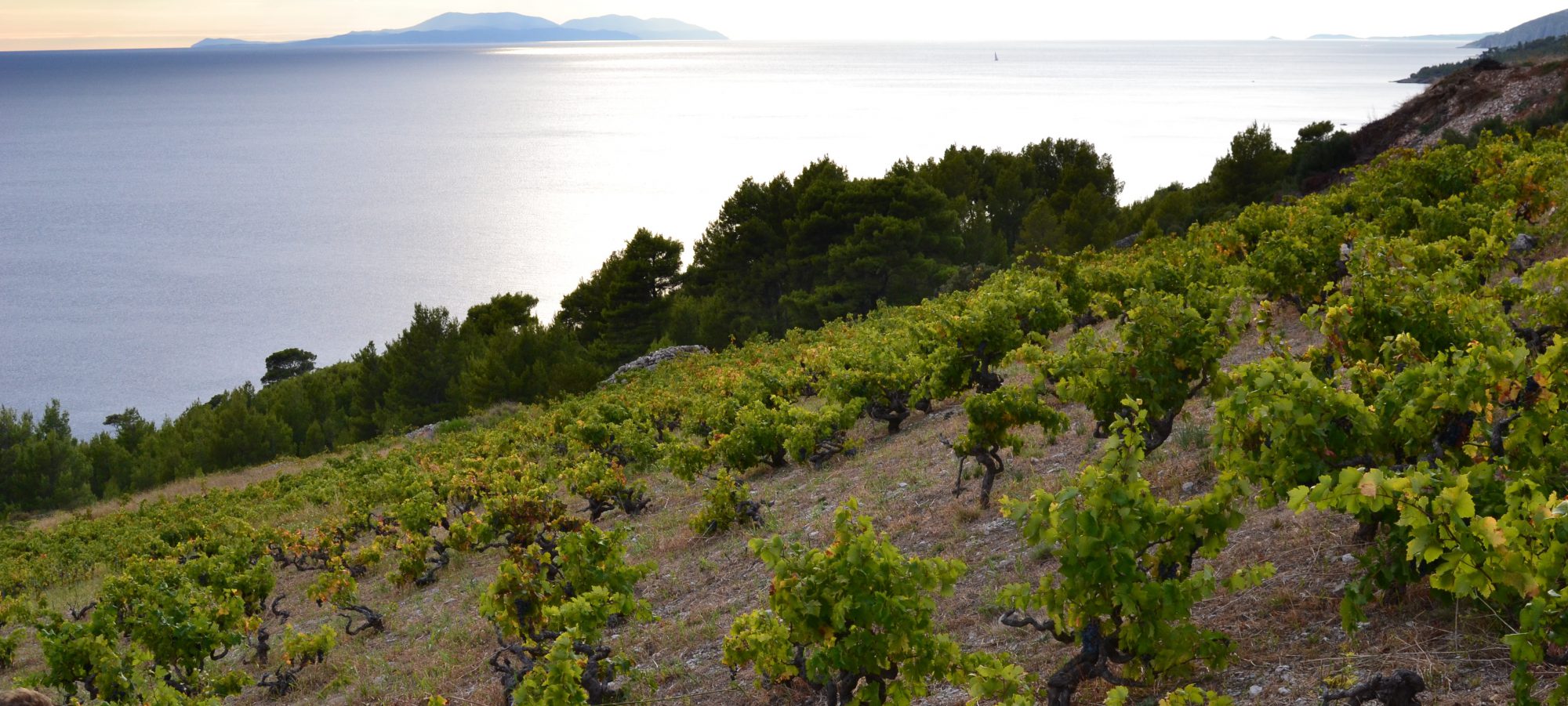Text and photos (except where stated otherwise) by Cliff Rames
When the subject of indigenous red grape varieties in Croatia arises, generally and indisputably it is accepted that Plavac Mali is King.
Yet the King’s Court includes several other local dignitaries of assorted distinction who have endured the centuries and survived the incursions of history. These locally noble grape varieties continue to play an important role in the glasses of present day wine consumers in Croatia, and some are just now finding their way onto the tables of wine lovers in distant lands like the U.S. and the U.K.

One of them is an old friend and occasional mistress of mine – Babić, the somewhat softer and more reasonable Queen to the often brasher and more savage King Plavac.
{To take this Royal Court silliness even further, I would submit that Crljenak Kaštelanski (AKA Zinfandel) is the Queen Mother and Teran, our wilely ambitious friend that rules the roost as Istria’s only indigenous red cultivar, is the Joker – a wild card prone to all sorts of surprises and unexpected delights.}
Back to Babić….

While records show that Babić has been planted in northern and central Dalmatia (Coastal Croatia) for hundreds of years, its origins remain a mystery (until DNA profiling is concluded). On one hand, it has been suggested that Babić is a localized clone of Dobričić, the red variety that is native to Šolta island and now famous for being one of the parent grapes (along with Crljenak Kaštelanski) of Plavac Mali.

But in their book “Plavac Mali: A Croatian Grape for Great Wines” , authors Edi Maletić, Ivan Pejić and Jasminka Karoglan Kontić suggest that Babić and Dobričić are connected via a parent/offspring relationship. However, insufficient genetic data makes it impossible at the moment to determine which is the parent and which is the scion.
Elsewhere in the region local synonyms for Babić include Babica, Babina, Babinka, Babičević, Pažanin, Roguljanac, or Šibenčanac – although “Babica”, according to some locals that I spoke with, is thought to be a wayward clone of Babić that produces bulbous berries of inferior quality.

Unlike Plavac Mali, which grows best throughout southern Dalmatia and on many of the idyllic islands that speckle the eastern side of the Adriatic Sea, Babić’s home is comprised of a 300-400 hectare swath of parched hillsides around the central Dalmatian town of Šibenik and southward toward the city of Split. While some Babić is also found in non-commercial vineyards as far north as Pag island near Zadar, its home is undisputaby the wine-growing hills of Primošten (60 hectares) and more specifically the famous Bucavac vineyard (18 hectares) in the hills overlooking the seaside resort town of Primošten, where it is the only variety planted (more about Bucavac in a later report).




Babić has traditionally lurked on the sidelines as a minor player among Croatia’s diverse array of indigenous grapes, overshadowed by more celebrated Plavac Mali. Leo Gracin, PhD, Senior Scientific Assistant at the Faculty of Food Technology and Biotechnology – University of Zagreb, Croatia and a leading grower and producer of Babić), estimates that Babić totals approximately 1.5% of all grapevine plantings in Croatia today. It is also the second most-widely planted native red grape (second to Plavac Mali) and represents about 4% of all red cultivars in Croatia.

Yet Babić plantings around Šibenik and Primošten are increasing. Most significantly, heavy-hitter producers like Vinoplod Šibenik (the local cooperative) and Zlatan Plenković (winemaker and owner of the Hvar-based winery, Zlatan Otok) recently planted several hundred thousand new Babić vines on the previously barren hillsides that were once part of a Yugoslav Army training base just outside Šibenik at Jadrtovac. These vineyards are expected to come into production in 2012 and could potentially unleash a flood of new Babić wines onto the market – hopefully at approachable prices!







#thirsty! 🙂
The best article I have read on Babić. As a recent grower of Babić I am happy to see it get the recognition it deserves!
Thank you, Michael. I love Babic! Where are your Babic vines located?
Best,
Cliff
Cliff, after a very long pause, I reread your article and finally notice your reply –
apologies for the delayed response.
Our small vineyard, of 2,000 Babić, 2,000 Plavac Mali and 2,000 Crljanek (with another 2,500 Babić planted last year) was planted not far from the vineyard of Plenković that you mention. It is facing the Morinje inlet from the sea and you can see it from the village of Jadrtovac just South of Šibenik. We would love to have you come for a visit to try our wine when you are in the area!
Thank you, Michael. I would love to visit someday – for sure the next time I am in the Sibenik area. 🙂
Best,
Cliff
Enjoyed reading more about Babic, I find it fascinating. I am a viticulturalist from Australia and I have recently spent the harvest in Istria. I was fortunate enough to try the Gracin Babic 2008, which for me was easily the best red wine I tasted on my trip (I also had good wines from France, Spain, Argentina and Italy) It is wines like this and some of the Malvasias and Terans from Istria that should be prominent on the world stage. I would love to be able to get them in Australia one day soon. The trouble that producers have gone to grow grapes on the rocky hills is well worth it.
Cheers, Bart